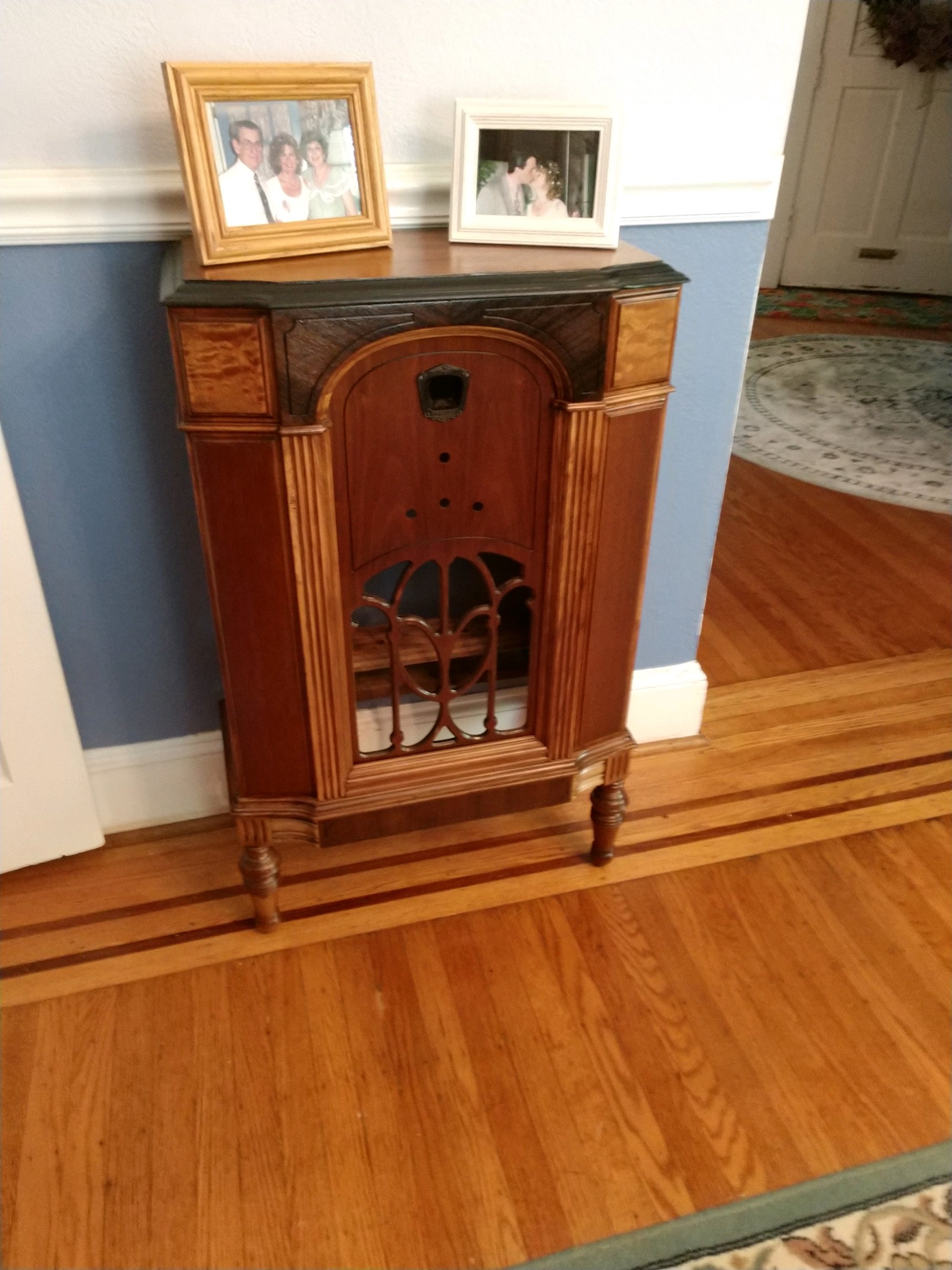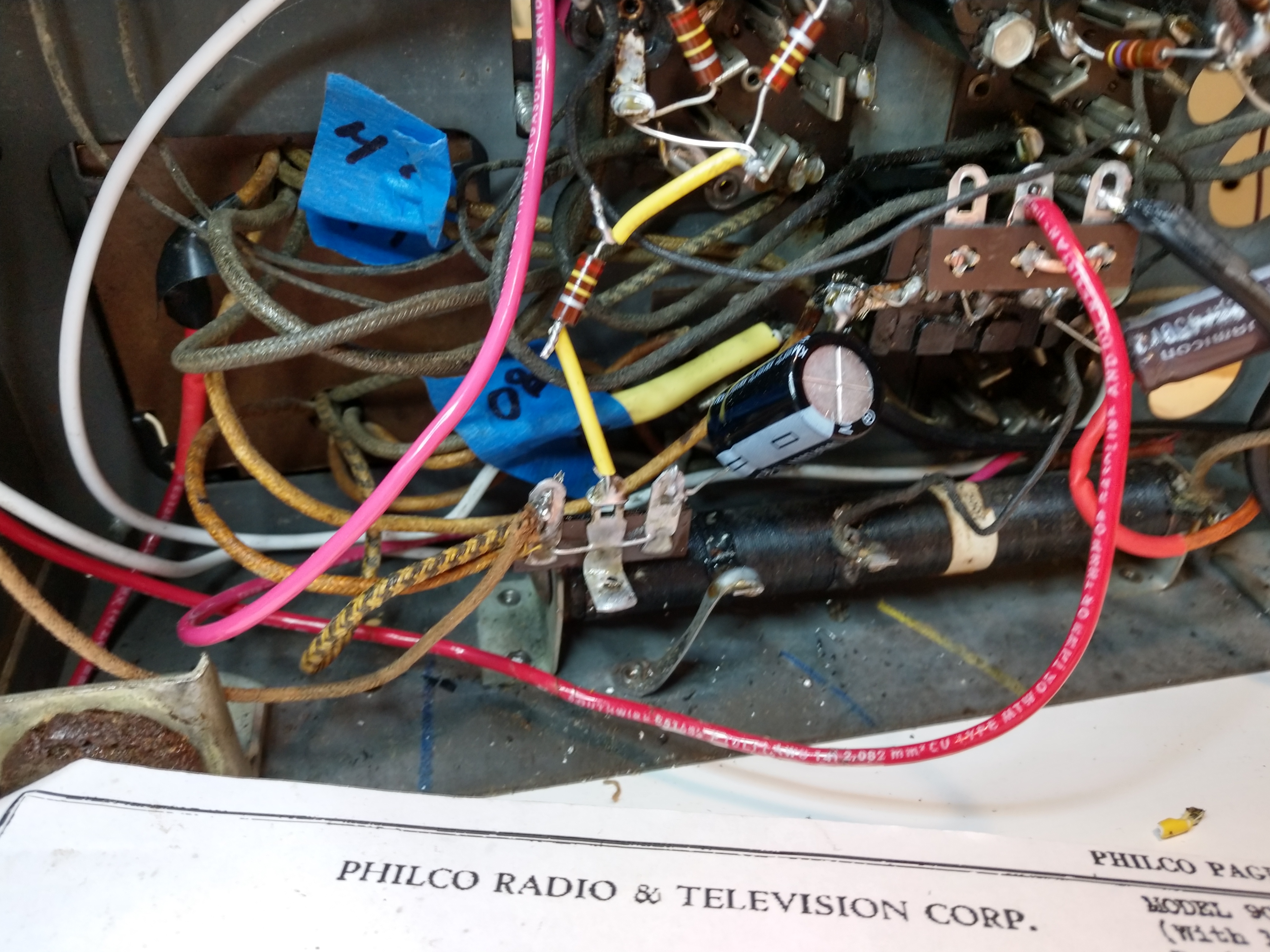11-23-2021, 09:20 PM
Hi all...brand new to this site and vintage radio message boards in general. I have just picked up this hobby, buying non-working radios from the 1930s and 1940s and getting them back to cosmetic originality and reliable function. I'm 61 years old and I live just outside Philadelphia PA. I've been something of a "professional hobbiest" for over 40 years! I've been a prolific woodworker and turned by attentions to acoustic guitar building over the last 15 years (over 50 built!). I've worked on, repaired and restored mechanical watches for longer than that. I'm a scientist by profession so I know a little about electricity and theory...so I thought I might try my hand at this!
I'll confess, my restoration experience so far is a few AA5s and a Philco 37-650 and amounted to nothing more than cleaning, recapping and replacing resistors on a one for one basis. I may ask some very stupid questions. I also intend to stick around...not swoop in for a few answers in my first and only 10 posts and then disappear!
Here's what's presently going on. I bought a beautiful and all original Philco 90 lowboy from 1931. It had stayed in one family and had been stored for the last 40 years. Sometime during its life, it was refinished with a very thick and dark stain and was practically black. The veneers were delaminating and the top had a broken edge. I pulled the chassis and got to work on the cabinet. After a month of work, this is how it turned out:

I started to attack the chassis next. I was thrilled to see Bob Andersen began a 90 restoration on his YouTube channel (Bob and shango66 are my electronic heroes!). I did what I do...bought tubes, re-stuffed the Bakelite blocks (even bought Bos's recommended block rebuild tool kit...very easy to use) installed the line safety caps, put in a few terminal ties to make things a little easier and replaced the electrolytics. It worked! The radio came to life and sounded OK. I then went about replacing the dog bone resistors on a one for one basis. I turned the radio back on and...nothing. Complete silence. Then...the dreaded smell and...smoke!
I traced the smoke to the end of the coiled, long resistor mounted to the inside of the chassis below the AC line filter cap block. To orient you, if the chassis is flipped up on its short edge with the bottom of the transformer closest to the bench and to the left, this resistor runs the length of the inside wall at the bottom. The smoke and heat is all at the left end of the resistor. At this end, there's lots going on. There's input from the center taps, lines 4 and 12 from the transformer. I have the negative end of one of the electrolytics connected there and a 250K ohm resistor that runs to a tie terminal on the Bakelite above. I looked at a photo from B. Anderson's thread on his 90 restoration on this site and what I've done looks correct. As anyone who has worked on a 90 knows, there's lots of available schematic and component info out there but to be honest, my experience in interpreting schematics is pretty limited. I have included a photo below as to what I've done. I hope I've uploaded that correctly! I've checked voltages on the 80 rectifier and the 47 speaker amp tube, plates and filaments, and they are fine. They run off separate wires out of the transformer. The speaker is quiet....very slight hum if you put your ear right up to it.

Any and all help will be very appreciated!!!
I'll confess, my restoration experience so far is a few AA5s and a Philco 37-650 and amounted to nothing more than cleaning, recapping and replacing resistors on a one for one basis. I may ask some very stupid questions. I also intend to stick around...not swoop in for a few answers in my first and only 10 posts and then disappear!
Here's what's presently going on. I bought a beautiful and all original Philco 90 lowboy from 1931. It had stayed in one family and had been stored for the last 40 years. Sometime during its life, it was refinished with a very thick and dark stain and was practically black. The veneers were delaminating and the top had a broken edge. I pulled the chassis and got to work on the cabinet. After a month of work, this is how it turned out:
I started to attack the chassis next. I was thrilled to see Bob Andersen began a 90 restoration on his YouTube channel (Bob and shango66 are my electronic heroes!). I did what I do...bought tubes, re-stuffed the Bakelite blocks (even bought Bos's recommended block rebuild tool kit...very easy to use) installed the line safety caps, put in a few terminal ties to make things a little easier and replaced the electrolytics. It worked! The radio came to life and sounded OK. I then went about replacing the dog bone resistors on a one for one basis. I turned the radio back on and...nothing. Complete silence. Then...the dreaded smell and...smoke!
I traced the smoke to the end of the coiled, long resistor mounted to the inside of the chassis below the AC line filter cap block. To orient you, if the chassis is flipped up on its short edge with the bottom of the transformer closest to the bench and to the left, this resistor runs the length of the inside wall at the bottom. The smoke and heat is all at the left end of the resistor. At this end, there's lots going on. There's input from the center taps, lines 4 and 12 from the transformer. I have the negative end of one of the electrolytics connected there and a 250K ohm resistor that runs to a tie terminal on the Bakelite above. I looked at a photo from B. Anderson's thread on his 90 restoration on this site and what I've done looks correct. As anyone who has worked on a 90 knows, there's lots of available schematic and component info out there but to be honest, my experience in interpreting schematics is pretty limited. I have included a photo below as to what I've done. I hope I've uploaded that correctly! I've checked voltages on the 80 rectifier and the 47 speaker amp tube, plates and filaments, and they are fine. They run off separate wires out of the transformer. The speaker is quiet....very slight hum if you put your ear right up to it.
Any and all help will be very appreciated!!!



![[-] [-]](https://philcoradio.com/phorum/images/bootbb/collapse.png)


